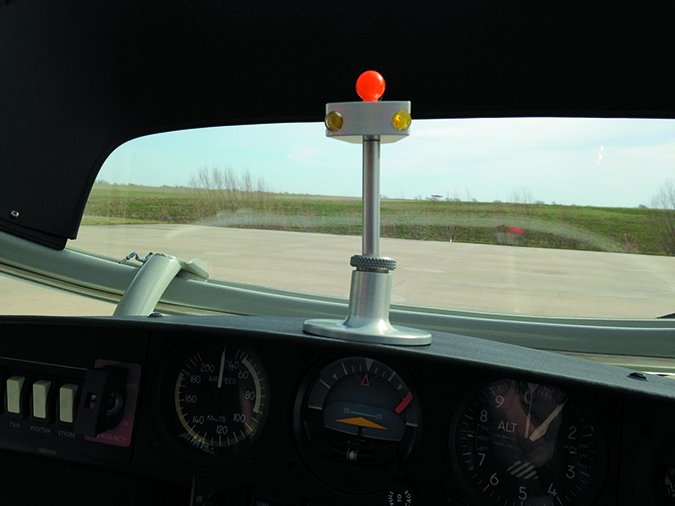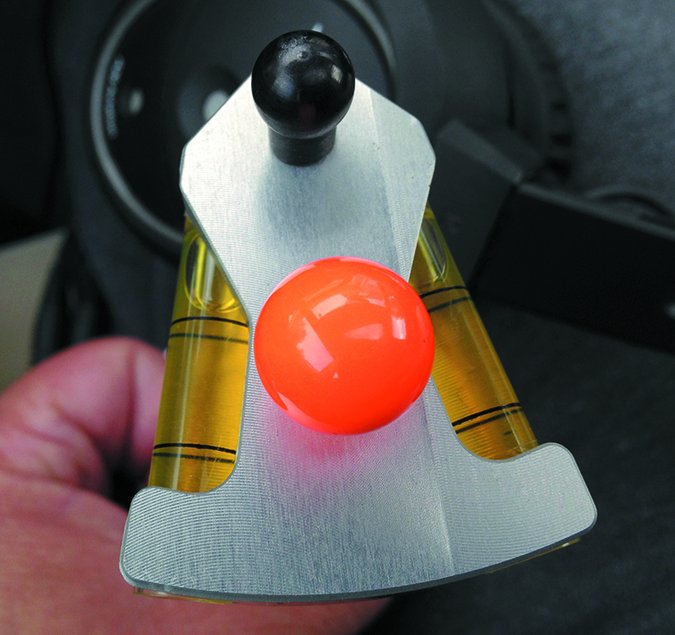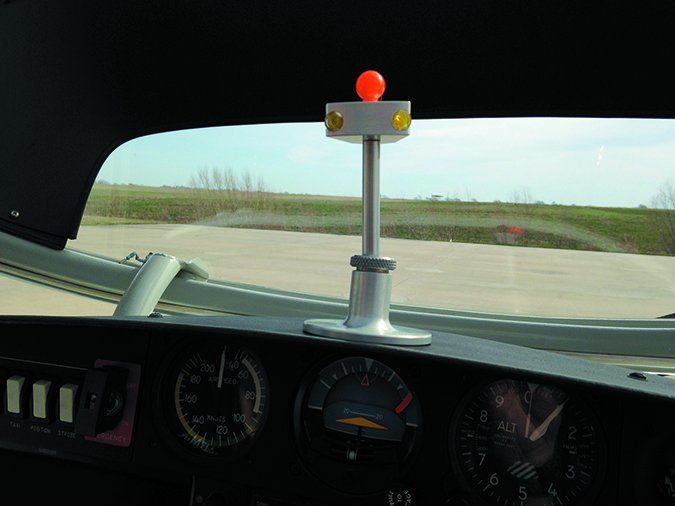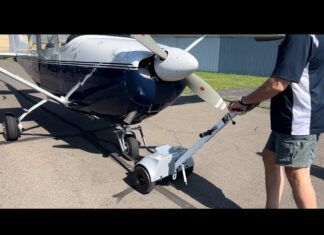My landings are a lot like my golf drives—inconsistent. That’s why I was anxious to check my cockpit seating position with the Eye Aligner, a portable leveling device developed by Florida-based FAA designated examiner Tripp Wacker. After 30 years of administering checkrides, Wacker recognized that landing and airwork performance were proportional to the correct view over the glareshield, but he didn’t invent the aligner concept.

Seat height adjustment tools (sight alignment spheres mounted on the glareshield) are common in jets, and every time he climbed into a jet cockpit he wondered why every airplane didn’t have one. That’s why Wacker and his colleagues eventually designed the $89.95 Eye Aligner, a high-quality leveling tool that’s machined from billeted aluminum and has two fixed sight balls attached. I found it simple to use and stow.
First, adjust the seat travel so you can reach the rudder pedals. Place the device on the highest part of the glareshield and point the apex of the aligner directly at your eyeballs. Center the bubble on both of the levels and then tighten the tensioning knob to keep the alignment stalk from pivoting. Sit up straight in the seat and adjust it so the black small sphere aligns with the larger orange sphere. If the seat is as high as it can go and you can’t achieve total eclipse of the black ball (some seats don’t have a vertical adjustment), go find a seat cushion.

I’m we’ll under six feet tall and the aligner proved that I sit low in all but the smallest cockpits, although when flying a float-equipped Piper Cub from the rear seat, the Eye Aligner indicated that I still needed a seat cushion for the proper view outside. It’s tough to say if the device is the cure-all for my inconsistent landing performance, but the more I use it, the more I think it erases my improper seating position as a variable.
“The important point about the Eye Aligner is that if you use it every time you fly, you’ll at least have a consistent sight picture,” said company spokesman Chad Battelene.
Battelene noted that the Eye Aligner isn’t just a ticket to better landings, but it can also benefit the quality of your inflight maneuvers. “For making steep turns, we’re taught to reference the aircraft cowling to the outside horizon. If you’re sitting too low or too high, you won’t have a precise reference,” he noted.
The Eye Aligner, which is patent-pending, is intended for all pilots—not just students. As Battelene put it, “Many airline and corporate jet pilots use alignment devices every time they climb in to the cockpit. Now the rest of us can do the same.”
The $89.95 Eye Aligner is available through Sporty’sand by visiting Sight for Flight.


